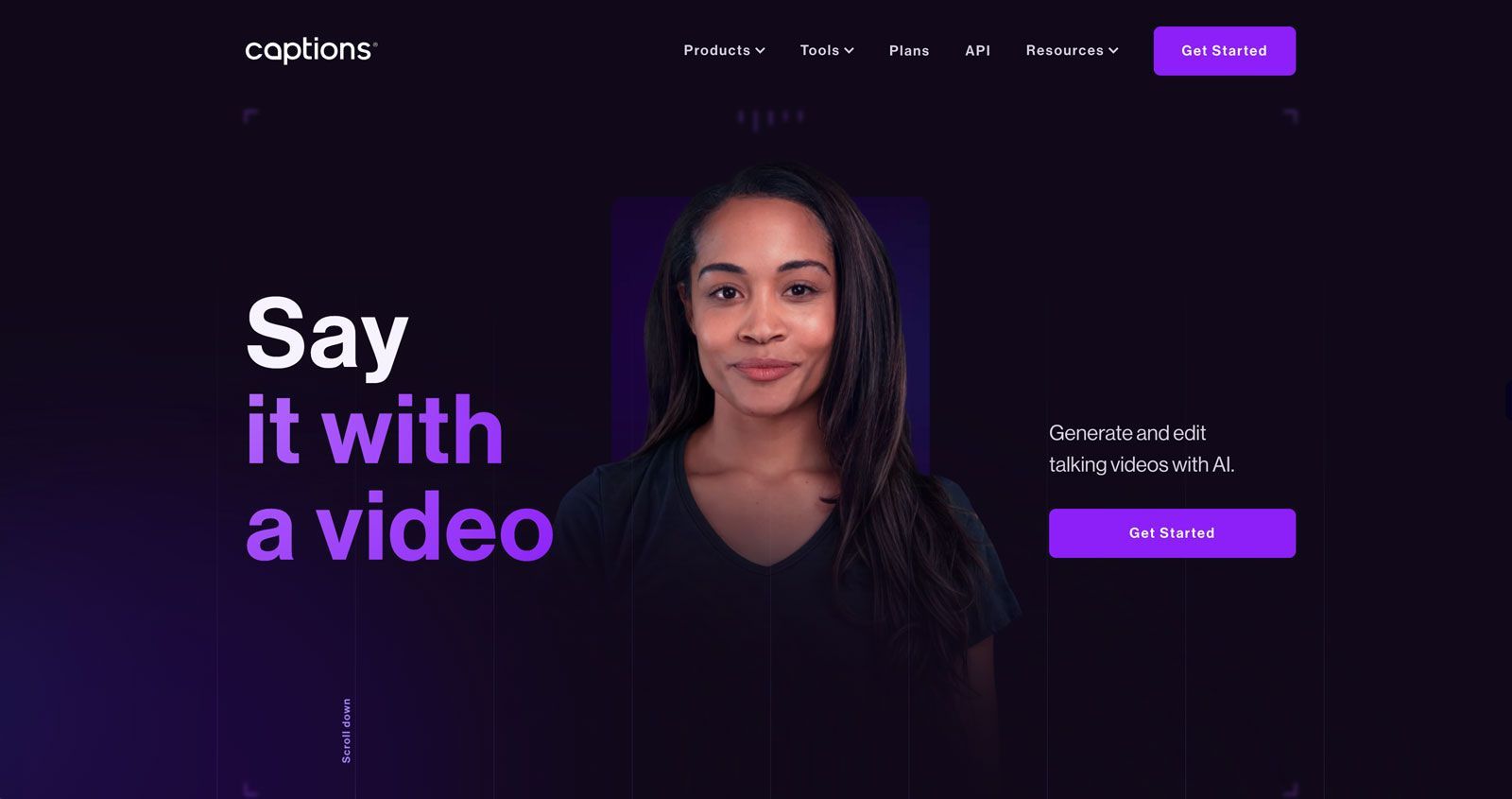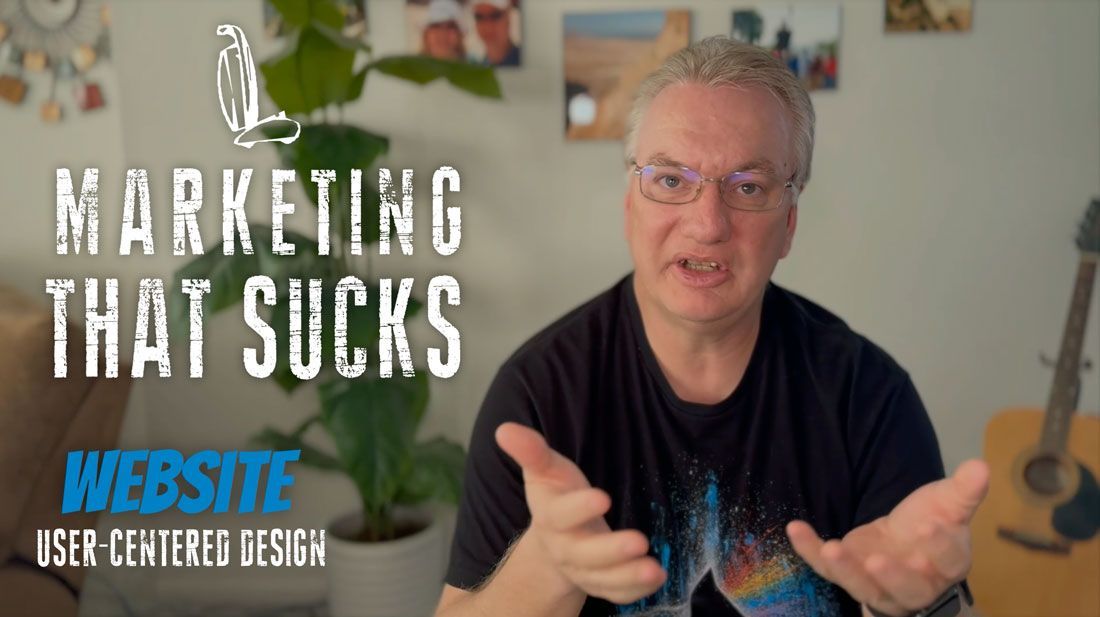AI Marketing Trends to Watch in 2025
The AI Advantage for Small Business Marketing
Artificial intelligence (AI) isn’t just a buzzword reserved for tech giants – it’s rapidly becoming a game changer for small and midsize businesses (SMBs). In fact, 91% of SMBs that have adopted AI report it’s boosting their revenue. Adoption has accelerated dramatically – 40% of small businesses were using AI tools in 2024, up from just 23% the year before. What does this mean? AI is leveling the playing field between SMBs and larger enterprises, enabling even lean teams to automate tasks, gain data-driven insights, and deliver personalized customer experiences once only possible with big budgets.
If you’re a small business owner feeling overwhelmed by the fast pace of change, take heart. You don’t need a Ph.D. in computer science or a Fortune 500 IT department to benefit from AI. Many AI marketing tools are affordable (even free), user-friendly, and designed with small business needs in mind. From writing your blog posts to answering customer inquiries at 2 AM, AI can shoulder some of the workload – letting you focus on strategy and relationships. And with the right approach (and a dose of human oversight), these technologies can help you work smarter, not harder.
In this in-depth guide, we’ll explore five key AI marketing trends for 2025 and how you can leverage each one. For each trend, we’ll break down what it is, share examples of accessible tools (like Jasper, ChatGPT, HubSpot, Surfer SEO, etc.), and provide “small biz takeaways” – actionable tips to apply the trend in your own marketing. The goal is to give you a big-picture view of where marketing is headed, along with practical steps to ensure your business isn’t left behind. Let’s dive in!
Here’s a quick look at the five AI marketing innovations we’ll cover:
- AI-Powered Chatbots for Customer Service – Always-on assistance to boost customer satisfaction.
- AI-Generated Content (and the Importance of Fact-Checking) – Faster content creation with tools like Jasper and ChatGPT, and why human oversight is critical.
- Predictive Analytics for Smarter Campaign Targeting – Using AI to analyze data and predict customer behavior, so you can target the right people at the right time.
- AI in Marketing Automation Tools – “Smarter” email, social, and ad campaigns through platforms like HubSpot that automate and personalize marketing tasks.
- Emerging AI Trends Shaping the Future of Marketing – New frontiers like hyper-personalization, voice and visual search, and more – and how small businesses can prepare.
With each trend, you’ll see that AI in marketing isn’t science fiction or only for mega-corporations. It’s here now, and it’s within reach for businesses of all sizes. Ready to get started on your AI marketing strategy? Let’s explore the top trends to watch in 2025.
1. AI Chatbots for Customer Service
Trend Overview: AI-powered chatbots have become one of the most accessible entry points for small businesses to use AI. These are virtual assistants that can converse with customers on your website, Facebook page, or messaging apps – answering questions, providing support, and even guiding purchases. By 2025, AI chatbots are more sophisticated than ever, thanks to advances in natural language processing (the tech that helps them understand and respond in human-like ways). They can handle a wide range of inquiries, from simple FAQs (“What are your business hours?”) to more complex tasks like helping a customer track an order or choose the right product. Importantly, chatbots never sleep – they offer 24/7 customer service, which is a huge plus for small businesses that can’t staff round-the-clock support. It’s no surprise adoption has surged: 53% of small businesses now use AI-powered chatbots or virtual assistants for customer service, a number that’s been climbing steadily each year.
Why the excitement? For one, chatbots can save time and money. They handle common queries automatically, reducing the load on you and your team. This translates into faster response times and lower support costs. In fact, studies find that implementing chatbots can cut customer service costs by as much as 30% and speed up response times by 80%. Moreover, many customers have grown comfortable chatting with bots for quick issues – especially if it means getting instant answers. A majority appreciate the quick, on-demand help; 64% of customers say the best chatbot feature is service available anytime. Modern AI chatbots (like those powered by GPT-4 or similar models) are also improving in quality – they understand natural language better and can handle multi-step conversations more gracefully than earlier bots.
Tools and Examples: There are plenty of user-friendly chatbot solutions out there that don’t require coding. For example, HubSpot’s free Chatbot Builder lets you create a custom chatbot for your website to book meetings, qualify leads, or answer FAQs – integrating all interactions into your CRM. Another popular option is Tidio or Zendesk’s Answer Bot, which can be added to your site to assist visitors (Tidio even has an AI mode that learns from your knowledge base). And of course, there’s ChatGPT itself – while ChatGPT is known as an AI writing assistant, the underlying technology can be integrated into chat interfaces. In fact, some small businesses use ChatGPT-powered chatbots fine-tuned on their company data to provide rich, conversational answers to customer queries. For instance, if you run an e-commerce store, you could deploy a chatbot on your site that uses AI to help customers find products (“I’m looking for gift ideas for a 5-year-old”) or troubleshoot issues (“How do I reset my password?”) without waiting for an email reply. The key trend for 2025 is that these bots are getting better at “understanding” context and intent, making their responses more accurate and helpful.
Small Biz Takeaways – AI Chatbots
- Start Small and 24/7: Even a basic chatbot that answers your top 10 FAQs can make a difference. You’ll provide instant service to customers (no more lost sales because someone couldn’t get a quick answer at 9 PM) and free up your time. Many chatbot tools offer templates – simply plug in your common questions and answers to get started.
- Integrate with Live Support: AI chatbots shine for routine queries, but you should still offer a human touch when needed. Set up your bot to hand off to a human (or allow customers to request a human) for complex issues or when the bot isn’t confident. This “best of both worlds” approach keeps customers happy.
- Train Your Bot on Your Business: Today’s AI bots can be trained or configured with your business info. For example, you can feed your chatbot your product catalog or knowledge base so it can answer in more detail. Periodically review chatbot transcripts to see where it might be failing and improve its answers over time – a bit of tweaking can go a long way.
- Affordable (or Free) Options: Don’t assume chatbots are expensive. Platforms like HubSpot (Chatbot Builder), ManyChat (for Facebook/Instagram), or even WhatsApp Business API offer free or low-cost chatbot solutions. Often, the fractional cost of a chatbot is far less than hiring additional staff, making it a smart investment for small enterprises.
- Enhance Customer Experience: Remember, an AI chatbot isn’t just about deflecting support tickets – it’s about creating a smoother customer experience. Used well, it can personalize greetings (“Welcome back, Jane!”), recommend products, and give your website a friendly, interactive feel. The result? Happier customers who feel taken care of, which can boost loyalty and sales.
Personal experience: Recently, I encountered some challenging domain configuration issues for a client. In the past, chatbots have proven largely ineffective in addressing such complex problems, so I typically preferred to speak directly with a technical representative. I spent several hours that evening engaging with technical support via chat and phone, yet the configuration issues remained unresolved. The following day, I decided to give the company's AI-powered chatbot a shot. Within minutes, I received a configuration solution that actually worked! For the first time, an AI-powered chatbot successfully resolved my issue faster and with greater accuracy than a human could! Color me blown away!

2. AI-Generated Content (and the Importance of Fact-Checking)
Trend Overview: Content is king in marketing – from blog posts and social media updates to product descriptions and email newsletters. In 2025, AI-generated content has gone mainstream. Tools like Jasper, Copy.ai, and ChatGPT have empowered small businesses to create content at a scale and speed that would have been impossible a few years ago. These AI writing assistants use large language models (the same tech behind ChatGPT) to generate text that reads alarmingly human-like. You can ask them to “write a 500-word article about eco-friendly home cleaning tips” or “draft a social media post for our new product launch,” and voila – a first draft appears in seconds. According to recent surveys, almost half of marketers (around 47%) already use AI tools to generate content, and an astounding 90% of content marketers plan to use AI to support their efforts in 2025. This surge is driven by clear benefits: AI can help brainstorm ideas, overcome writer’s block, and produce the first draft of marketing copy fast. For a small business owner who wears many hats, AI content tools can feel like having a virtual copywriter on call 24/7.
However, AI content creation isn’t a set-and-forget solution. While these tools are powerful, they have a well-known flaw: they sometimes “hallucinate” facts or produce incorrect information. In other words, an AI might write something that sounds convincing but is actually false or unsupported. Research indicates that even advanced models like GPT-4 can output false facts in 10–20% of complex queries. That means if you use AI to draft an article about, say, “the best financial strategies for 2025,” there’s a chance it might insert an outdated statistic or misinterpret a concept. The risk is especially high for factual, technical, or niche content. That’s why fact-checking and human editing are absolutely essential when using AI-generated content. Think of the AI as your speedy first-draft writer, and you (or your team) as the editor who refines the tone, checks the facts, and adds the personal touch. The good news: when humans and AI collaborate, the result can be high-quality content produced much faster than before.
Tools and Examples: There’s a growing ecosystem of AI writing tools catering to different needs. Jasper is popular for marketing copy – you can toggle tones and use recipes (pre-designed prompts) for things like Facebook ad text or product descriptions. ChatGPT itself is extremely versatile – small businesses use it to draft blog outlines, come up with email subject lines, or even generate entire articles which they then polish up. There are also specialty tools like Surfer SEO, which pairs AI writing with search engine optimization insights. Surfer SEO can integrate with tools like Jasper or WordPress to ensure the content you or the AI create is also optimized for the keywords you care about (for example, if you’re writing about “fractional CMO services benefits,” it will guide the content to cover relevant subtopics and keywords). On the visual side, AI design generators (e.g. DALL-E or Midjourney) are emerging to create images for blog posts or social media – although adoption there (about 28% of marketers using AI for design) trails text generation for now. The big trend is that AI-generated content is becoming a standard part of content creation workflows, even for small teams. It’s common to see a human marketer using AI to generate five blog post ideas and introductory paragraphs, then choosing the best one to expand and fact-check. This hybrid approach speeds up content calendars significantly.
Of course, quality matters more than quantity. Google and other search engines have made it clear that helpful, people-first content is what ranks – they don’t penalize AI-generated content per se, but they do penalize low-quality or spammy material. So, the emphasis in 2025 is on using AI to assist content creation while maintaining editorial oversight. It’s like having a junior copywriter draft something for you – you’ll review it, ensure it’s accurate, on-brand, and truly useful to your audience before publishing. One thing AI can’t fully replace is personal experience and insights. As a small biz owner, your unique stories and voice are gold. The AI can help you articulate them faster, but your human touch is what will resonate with customers and build trust.
Small Biz Takeaways – AI-Generated Content
- Turbocharge Your Content Creation: Leverage AI tools to produce first drafts of blogs, social media posts, product descriptions, and more. This can dramatically cut down writing time. For instance, instead of spending 4 hours writing a blog post from scratch, you might spend 1 hour prompting an AI and getting a decent draft, then another hour editing it to perfection. Over a month, that could free up dozens of hours.
- Always Fact-Check and Edit: Treat AI-generated text as a starting point. Review every fact, figure, or claim. Verify stats from reputable sources and ensure quotes or references are accurate. If an AI-written paragraph says “Studies show 80% of consumers prefer X,” make sure that study actually exists (and cite it!). This extra step protects your credibility – don’t let AI mistakes slip through. It helps to use your own knowledge and do a quick Google search on any critical facts the AI provides.
- Maintain Your Brand Voice: AI models can mimic various tones, but you should guide them to match your brand’s personality. You might need to tweak the wording or inject some of your brand’s flavor into the content. Over time, you can even train some AI tools with your writing style. The goal is that readers shouldn’t be able to tell which lines came from an AI and which from you – it should all feel cohesive and “on-brand.”
- Use the Right Tool for the Job: Experiment with a few AI writing assistants to see which fits your workflow. ChatGPT is an amazing generalist (and it’s free for basic use), Jasper has marketing-specific templates (great for ad copy, emails, etc.), and other tools like Copy.ai, Writesonic, or Notion AI offer unique features. Many have free trials. As a small business, you can start with free versions and upgrade if you find a tool that really boosts your output.
- Augment, Don’t Replace, Your Team: If you have a team (or even a freelance writer), involve them in using AI rather than fearing it. For example, your marketing assistant can use Surfer SEO + Jasper to draft an SEO-friendly blog post, then you or another teammate add insights and check it over. This way, AI becomes a productivity partner. It can also help non-writers on your team contribute content – the AI gives them a structure to work with.
- Stay Authentic and Human: Lastly, remember that content marketing is about building trust and relationships. Share your personal anecdotes, customer success stories, and opinions. AI might help you with grammar or structure, but your human perspective is irreplaceable.
Personal experience. As you might have guessed, this article has been crafted with the assistance of AI tools, particularly Chat GPT's "Deep Research" feature. The objective is to generate deep, rich, and valuable content for small business owners to facilitate their growth. I also ensure that the content is optimized for SEO search terms that I aim to rank for. Leveraging AI tools like Chat GPT enables me to remain competitive in an increasingly AI-saturated marketing landscape.
Looking for a Trusted Marketing Advisor?
Reach out today for a complimentary consultation! Discover how Bryt Idea can help elevate your business!

3. Predictive Analytics and Smarter Campaign Targeting
Trend Overview: One of the most powerful aspects of AI in marketing is its ability to make sense of data and even predict future outcomes. This is where predictive analytics comes into play. In plain terms, predictive analytics uses historical data, statistical algorithms, and machine learning to identify the likelihood of future events – like which customers are most likely to buy (or churn, or click), what times of year demand will spike, or which marketing leads are most promising. For a small business, this used to sound very “corporate” and out of reach, but not anymore. In 2025, predictive features are increasingly built into the tools small businesses already use. For instance, an email marketing platform might analyze past campaigns and predict which segment of your list is most likely to engage with a new offer, or a CRM system like HubSpot can assign a lead score to each contact based on how they interact with your site/email (indicating who’s hot or cold). The result is smarter campaign targeting – focusing your marketing efforts where they’re most likely to pay off, guided by AI insights rather than hunches.
Why does this matter? Two reasons: efficiency and effectiveness. Small businesses don’t have unlimited marketing budgets – every dollar counts. Predictive analytics helps you allocate resources more efficiently by highlighting what’s likely to work. For example, if an AI analysis of your e-commerce data shows that customers who buy Product A often buy Product B a month later, you might set up a targeted cross-sell campaign at exactly the right time (something a human might miss). Or suppose your sales CRM’s AI identifies that leads coming from Facebook tend to close at a higher rate than leads from print advertising; you’d know to double down online and perhaps ease up on the less effective channel. Marketers are taking note: 40% of marketing teams have predictive analytics on their roadmap for 2025 as a top investment, reflecting a broader push to become more data-driven. In short, predictive analytics turns the past (your customer data, sales history, web analytics) into a peek into the future – so you can make proactive decisions.
For small businesses, some of the most popular use cases include: predictive customer segmentation (grouping customers by likelihood to take an action), churn prediction (identifying which customers might be about to leave, so you can re-engage them), sales forecasting (using AI to project next quarter’s sales based on trends), and content recommendation (like predicting which blog posts a site visitor is likely to read next and suggesting them). Big companies have done this for years (think Amazon’s “recommended for you” or Netflix’s predictive recommendations), but now even a 5-person company can leverage similar concepts through SaaS tools.
Tools and Examples: You might already have some predictive analytics working for you without realizing it. Google Analytics 4 (GA4), for example, offers predictive metrics for eligible users – such as the probability that a user will make a purchase in the next 7 days, which can be used to build audiences for remarketing. Email platforms like Mailchimp use tiny doses of AI (e.g., “send-time optimization” to predict the best hour to send your newsletter to each subscriber). CRM and marketing automation systems like HubSpot and Salesforce have built-in AI scoring – HubSpot’s Predictive Lead Scoring analyzes dozens of factors (like website activity, email opens, etc.) to predict which leads are most likely to become customers, flagging them for your sales attention. On the advertising front, Facebook Ads and Google Ads heavily use AI to optimize targeting – when you run an ad campaign, their algorithms predict which subset of the audience will respond and adjust bids accordingly. In 2025, even affordable tools like Zoho CRM, SugarCRM, or ActiveCampaign have started adding AI-driven predictions and insights to help small businesses target better.
To illustrate, imagine you run an online boutique. Your analytics might show that customers from a certain region tend to buy your knitwear in October (as it gets cooler), and that 30% of those who buy a jacket come back for a scarf. A predictive model could take this info and suggest a targeted campaign: in late September, send a personalized email to all past jacket customers in that region offering a discount on scarves – because they are likely to be interested. This kind of AI marketing campaign targeting can significantly lift conversion rates because it’s timely and relevant, based on patterns the AI found. It’s like having a data analyst on staff who constantly sifts through your numbers and whispers “psst, focus here.” As a bonus, predictive tools often visualize data in dashboards that make it easier to understand your customer trends – no need to wrestle with spreadsheets.
Small Biz Takeaways – Predictive Analytics
- Leverage Built-in AI in Your Existing Tools: Check the marketing software you already use – many have hidden AI gems. Turn on features like lead scoring, predictive audiences, or recommended actions. For example, if you use a CRM (HubSpot, Zoho, etc.), explore if it offers AI predictions for lead or deal scoring. In e-commerce platforms (Shopify, WooCommerce), look for apps or plugins that analyze purchase patterns. Often, you can start using predictive insights with just a few clicks.
- Focus on High-Impact Use Cases: As a small business, you don’t need to predict everything – start with one area that could move the needle. Do you struggle with cart abandonment? Look for AI tools that predict who’s likely to abandon and trigger a save-the-sale offer. Want to improve email marketing? Use AI to create segments (like “warm leads” vs “cold leads”) and target content accordingly. By zeroing in on a key opportunity (e.g., preventing customer churn or upselling current clients), you can get quick wins that directly impact revenue.
- Smarter, Not Creepier Marketing: AI can reveal a lot about customer behavior, but use that power thoughtfully. Customers appreciate timely recommendations, but nobody likes to feel spied on. When implementing predictive campaigns, make sure your messaging is helpful and not too invasive. For instance, “We thought you might like these accessories for your new camera” feels helpful, whereas explicitly saying “Our AI predicts you will buy X next week” would be… less so. Keep the human touch in how you act on AI insights.
- Combine with Personalization: The real magic happens when predictive analytics meets personalization. If you know who is likely to do what, you can craft marketing messages that speak directly to them. Consider setting up dynamic content on your website or emails that changes based on customer segments. Many email tools let you show different content blocks to different predictive segments – so a customer predicted to be interested in product A sees an image of that, while another customer sees product B. This can significantly increase engagement.
- Monitor and Adjust: Predictions are probabilities, not guarantees. Keep an eye on how your AI-driven campaigns perform and be ready to adjust. Maybe the AI thought group X would respond, but they didn’t – that’s okay, use that feedback to refine the model or your approach. Most platforms’ AI will also learn and improve as it gets more data (for example, lead scoring models can recalibrate as they see which leads actually converted). Regularly check the dashboards or reports to understand why the AI is making certain predictions – it can often surface surprising insights about customer behavior that you can act on beyond just that campaign.
- Stay Data-Ethical: Ensure you’re respecting privacy and using data that you’ve collected legitimately (and in compliance with regulations). AI-driven targeting should still align with consent – e.g., use predictive insights on customers who have opted into marketing. Being a small business doesn’t exempt you from data privacy rules, and being transparent and ethical with customer data will build trust in the long run.
(Did You Know? Companies that fully embrace data-driven marketing (often using tools like predictive analytics) are more than 6 times as likely to be profitable year-over-year than those that don’t. It’s a sign that listening to the data – and anticipating customer needs – pays off. With AI, even small businesses can tap into this advantage without needing a full analytics department.)

4. AI in Marketing Automation Tools
Trend Overview: Marketing automation – using software to automate repetitive marketing tasks – has been a growing staple for businesses of all sizes. Think automated email sequences, scheduled social media posts, or drip campaigns that nurture leads over time. What’s new in 2025 is the infusion of AI into these automation tools, making them smarter and more effective. We’re not just talking about scheduling a newsletter anymore; we’re talking about AI-powered campaign optimization. For example, an automation platform might automatically segment your audience based on their behavior (with AI figuring out the optimal segments), draft email content for each segment (using AI writing assistants), and even choose the best time to send each message (using predictive send-time analytics). Essentially, AI in marketing automation takes a lot of the manual guesswork out of running campaigns. The result? Even a tiny marketing team can run multi-faceted, personalized campaigns at scale, similar to what a big corporation’s marketing department might do – truly making AI marketing campaigns accessible to small businesses.
This trend is evident in how major marketing platforms are evolving. For instance, HubSpot has rolled out an array of AI features: content assistants to generate copy, AI for A/B testing suggestions, and predictive tools for workflow optimization. Other platforms like Mailchimp, ActiveCampaign, and Marketo have introduced AI-driven features too – from AI-generated subject lines to automated customer journey mapping. The aim is to boost results: better open rates, click-through rates, conversion rates, and customer retention, all with less manual tweaking. Small businesses are embracing these enhancements. In fact, about 64% of small businesses already use some form of marketing automation to stay competitive and increase productivity. And marketers have noted the impact of adding AI – 63% say that AI in their marketing automation improved targeting and segmentation (meaning the messages reached the right people more effectively).
An example scenario: Imagine you run a boutique fitness studio. Using an AI-enhanced marketing automation tool, you could set up a campaign that automatically does the following – when someone signs up for a trial class, they’re put into a personalized email drip sequence. The AI might craft an email saying “Hey [Name], thanks for trying our yoga class! Here are some tips for next time…”. If the person doesn’t come back within a week, the system might automatically send a special offer to entice them, and if they do come back, it sends a congratulatory message and maybe upsells a membership. All of this can be created with templates, and the AI can optimize the timing and wording. To the customer, it feels like your business is super attentive and engaging. To you, it feels like you have an extra marketer handling follow-ups, when in reality it’s an automated workflow you set up with a few clicks and some AI content assistance. The future of marketing is this kind of hands-free, yet personalized, campaign – and it’s happening now.
Tools and Examples: For small businesses, some standout tools and their AI features include:
- HubSpot: Introduced an AI-powered Content Assistant that can draft marketing emails, blog posts, or landing page text for you. It also has ChatSpot, a conversational AI tool by HubSpot that allows you to ask questions like “which of our contacts interacted with last month’s campaign?” in plain English. HubSpot’s workflows can branch based on AI predictions (e.g., if a lead score is high, do X, if low, do Y).
- Mailchimp: Offers Creative Assistant, which can auto-generate design suggestions for your emails and ads. It also provides predicted demographics for your contacts (like guessing age/gender based on data, which can help with targeting) and send-time optimization.
- ActiveCampaign: Uses machine learning to do things like predict win probability for deals in your pipeline, or suggest the next best action in an automation. Its predictive sending feature will deliver emails when each contact is most likely to open.
- HubSpot (again) and Salesforce Pardot: Have AI that can analyze your email subject lines or landing page content and flag if something might not perform well (e.g., “Your subject line might be too long, consider shortening it” – based on training data of what usually works). They can also recommend content.
- Surfer SEO + Automation: If content marketing is a big part of your strategy, you can integrate tools like Surfer (for SEO optimization) with automation – e.g., automatically updating old blog posts with new keywords suggestions by using AI insights, without manual research each time.
Even social media management tools are adding AI: Hootsuite and Buffer have started integrating AI to suggest optimal posting times and even generate caption ideas for your posts. So if you’re scheduling a week’s worth of Instagram posts, the tool might pre-fill a caption based on the image and some hashtags, which you can then tweak.
The overarching trend is “automate and elevate”: automate the grunt work (scheduling, basic content generation, list segmentation) and elevate the strategy by injecting AI insights so the right message hits the right person at the right moment. For small businesses, marketing automation with AI is like having a tireless assistant that not only executes tasks but also learns and improves them. And thanks to many cloud-based services, you can start with modest budgets – often these platforms charge by list size or number of users, so a small business with a few thousand contacts can be on a low tier but still enjoy AI features that all users get.
Small Biz Takeaways – AI in Marketing Automation
- Automate Repetitive Tasks: If you find yourself sending similar emails over and over, posting regular social updates, or manually following up with leads, it’s time to automate. Use tools like HubSpot or Mailchimp to set up drip campaigns (pre-written sequences that go out automatically) for common scenarios – e.g., welcome new subscribers, nurture leads that showed interest, re-engage lapsed customers. Let AI help craft the content for these sequences to save even more time.
- Personalization at Scale: Leverage AI to personalize beyond just <First Name>. Modern automation can insert product recommendations, change images or text based on customer segments, and more. For instance, your email automation could show different product images depending on each customer’s past browsing behavior – all set up through an AI rule in your email tool. This level of personalization was hard to do manually, but AI makes it feasible automatically, leading to emails and ads that feel tailor-made for each recipient (and thus perform better).
- Use AI Suggestions to Improve Campaigns: Pay attention to any recommendations your platforms provide. Did your email tool suggest a better subject line or a better time to send? Test it out! These suggestions are often based on huge datasets (e.g., Mailchimp might suggest a subject line style because it has seen millions of emails and knows what works). It’s like having a consultant give you tips. Over time, implementing these small tweaks can significantly boost your campaign performance – whether that’s higher open rates, click-throughs, or conversions.
- Cross-Channel Automation: Consider integrating multiple channels (email, SMS, social, ads) into unified automated campaigns. AI can help maintain consistency and optimal timing. For example, you might automate an offer: if a customer clicks an email but doesn’t purchase, they automatically get added to a Facebook Ads audience (thanks to integration + AI) and see your ad the next day, and maybe also get a follow-up SMS. Setting this up is increasingly plug-and-play with tools talking to each other. Don’t be intimidated – start with one channel and then layer on others.
- Monitor Metrics, Adjust Tactics: Automation doesn’t mean “set and forget entirely.” Check your dashboards regularly. Which emails are people opening or ignoring? Which messages lead to unsubscribes? The great thing is automation software will show you these metrics clearly. Use the data (often augmented with AI insights, like predicted engagement scores) to tweak your workflows. For example, if the 3rd email in your series has a drop-off in engagement, maybe the AI can help rewrite it or you can try a different approach at that step. Continuous improvement is key – and AI gives you both the data and the content ideas to do it.
- Keep the Human Touch: While automation and AI handle the heavy lifting, continue to add a human touch where it counts. Perhaps you automate a sequence of onboarding emails for new clients, but also schedule a personal check-in call from you after one month. Use AI to do the routine stuff, and free yourself to do the personable, relationship-building activities that only you can do. Customers will appreciate that balance of efficient communication and genuine human interaction.
(Case in point: A small online education business used ActiveCampaign’s marketing automation with AI features to streamline their funnel. They set up an AI-generated email series for new leads from their website: the AI wrote educational content about their course topics. Based on engagement, the system automatically moved interested leads to a sales offer sequence. The result? They managed to increase their lead-to-customer conversion rate by 20% while actually sending fewer one-size-fits-all emails. The AI helped send targeted, timely messages instead of blasts, proving that even without a big team, smart automation can yield big results.)
Looking for a Trusted Marketing Advisor?
Reach out today for a complimentary consultation! Discover how Bryt Idea can help elevate your business!

5. Emerging AI Trends Shaping the Future of Marketing
Trend Overview: Beyond the established trends above, there are several emerging AI-powered developments that are poised to shape the future of marketing in 2025 and beyond. These are areas where AI is breaking new ground – and while some might still be early for mainstream small business adoption, they’re worth keeping on your radar (and even experimenting with) to stay ahead of the curve. Let’s highlight a few of the most notable emerging trends:
- Hyper-Personalization & Dynamic Content: We’ve touched on personalization, but the future is heading toward hyper-personalized experiences. AI can analyze customer behavior at a granular level and dynamically adjust what each user sees. For example, AI-driven personalization engines (like Dynamic Yield or Adobe Target, now accessible to mid-market businesses too) can modify your website content on the fly for each visitor. If one visitor consistently browses athletic shoes, the homepage might automatically show them your latest sneakers, while another visitor sees a promotion for running apparel. This goes beyond manual segmentation – it’s AI making real-time decisions. Small biz takeaway: as this tech becomes more accessible (through plugins or built-in e-commerce platform features), even modest websites can start offering Amazon-like personalization, which can significantly boost engagement and sales.
- Voice Search and Conversational AI: With the proliferation of voice assistants (think Siri, Alexa, Google Assistant), more consumers are searching and interacting with brands using voice. By 2025, roughly 1 in 5 people globally use voice search regularly, and 58% of consumers have used voice search to find local business information. That means small businesses need to optimize for voice queries – often more conversational queries (e.g., “Which coffee shop is open near me right now?”). It also opens up opportunities like creating a presence on voice platforms (for instance, developing a simple Alexa skill for your business or ensuring your Google Business profile is voice-search friendly). Additionally, conversational AI is on the rise – not just chatbots typing, but voicebots that can handle phone inquiries or voice chats. We might soon see small businesses setting up AI to answer common phone calls (“Press 1 for hours” might become an AI voice that actually answers questions). The trend: marketing is becoming a two-way conversation, often driven by voice. Preparing your content and SEO for this (using natural language and Q&A formats) is wise.
- AI-Driven Visual Search and Image Generation: Visual search is an emerging area where consumers can search using images (for example, taking a photo of a product to find similar items). AI powers these visual recognition systems. Platforms like Google Lens and Pinterest Lens are making visual search more common – someone might snap a picture of a chair they like and find where to buy it online via AI. For small businesses, especially in retail or e-commerce, ensuring your product images are optimized (clear, well-tagged with keywords) can help you appear in those visual searches. On the creative side, generative AI for images and videos is advancing quickly. Tools like DALL-E 3, Midjourney, or Canva’s AI image generator allow you to create custom visuals without a photographer or graphic designer. Need a unique graphic for a blog post? You can describe it to an AI and get something usable. Need to produce a quick promotional video? Tools like Synthesia can generate a video with an AI presenter reading a script. While these AI creations sometimes still have quirks, they are improving. The future marketing landscape will likely feature a mix of AI-generated and human-created media. Small businesses that experiment with these tools can produce more visual content (for ads, social media, etc.) without big budgets. Just be mindful of quality – use AI visuals as supplements and ensure they match your brand’s look.
- Ethical AI and Transparency: As AI takes a bigger role in marketing, consumers are growing curious (and cautious) about it. There’s a budding trend around ethical AI practices – being transparent about when AI is used, ensuring AI decisions aren’t biased or discriminatory, and respecting privacy. Big brands are starting to advertise when content is AI-assisted (for instance, some sites tag AI-written articles). For small businesses, the key takeaway is to use AI to enhance customer experience, not to trick or spam. If you use a chatbot, clarify it’s a virtual assistant. If you personalize heavily, be careful not to cross privacy lines that could spook customers. Also, keeping a human in the loop (e.g., moderating AI outputs, having customer service oversee chatbot conversations periodically) will remain important. The companies that thrive will balance AI efficiency with human empathy and honesty about their practices. In the future of marketing, trust is paramount – and that means using AI responsibly.
- AI for Influencer Marketing and Partnerships: Identifying the right partners or influencers for your niche is another area AI is starting to assist with. New AI tools can analyze social media engagement and audience demographics to suggest micro-influencers that align with your brand. For example, an AI might analyze thousands of Instagram accounts to find 10 local food bloggers whose followers match your target customer profile, saving you hours of research. It can even predict the potential ROI of collaborating with a specific influencer based on their past sponsored posts performance. While this might be more relevant to slightly larger small businesses or those heavily into social media marketing, it’s an emerging trend worth noting. It underscores how AI can crunch big data to inform even relationship-based marketing like influencer partnerships.
In essence, the future of marketing is looking highly automated, personalized, and multi-modal (text, voice, visuals). AI marketing strategy will soon simply be marketing strategy, because AI will underpin so many tactics. For small businesses, staying informed about these emerging trends means you can adapt early and maintain a competitive edge. The playing field is more level than ever – many of these AI tools are affordable or have free tiers, and they don’t require technical expertise to use. The main cost is an openness to learning and experimenting.
Small Biz Takeaways – The Road Ahead
- Audit Your SEO and Content for Voice Search: Take some time to think about how a customer might ask for your product or service verbally. Incorporate those Q&A formats into your website (an FAQ section is great for this). Ensure your business listings (Google, Yelp, etc.) are up to date since voice assistants pull from these. This will help you capture the growing number of voice searches like “near me” queries. Being voice-friendly is becoming part of SEO best practices.
- Experiment with Generative AI for Creatives: Don’t be afraid to play with tools like Midjourney (for images) or even ChatGPT’s new image generation capabilities. You might discover you can create a decent logo variation, Facebook ad image, or product concept mockup without a graphic designer. If you need quick visuals, AI can be a lifesaver. Just double-check usage rights and quality – sometimes a real designer’s touch will still be needed, but AI can produce a useful draft or idea board.
- Stay Educated on AI Trends: Allocate a little time each month to see what’s new in AI marketing. Subscribe to a newsletter or follow a site (like the Digital Marketing Institute or MarketingProfs) that covers AI developments. The landscape is evolving fast. By keeping current, you’ll spot new opportunities for your business. Today’s “nice to have” could become tomorrow’s standard practice.
- Prioritize Customer Experience: Use emerging AI tech always with the question: “Does this improve my customer’s experience?” If yes, it’s likely worth pursuing. AI for personalization, if done right, makes customers feel understood. AI for faster service (be it chatbot or voice bot) reduces friction. But if any AI initiative doesn’t clearly benefit the customer, reconsider it. Shiny tech is fun, but in small business, ROI and happy customers rule the day.
- Plan for a Human-AI Team: As you incorporate more AI, think of it as adding team members. Your “AI team” might include a chatbot, a content generator, an analytics predictor, etc. Define roles: e.g., Chatbot handles Tier-1 questions, human handles Tier-2. AI writer drafts blogs, human polishes. When you see it this way, it’s easier to integrate AI smoothly into operations. Also, train your human team to work alongside the AI – e.g., your sales person should know how the lead score is decided by AI so they trust it, your content person should learn prompt engineering to get the best output from Jasper or ChatGPT, and so on.
Finally, keep an eye on your competitors (big and small). If you notice others starting to use an AI tool (like a competitor’s website has a nifty interactive quiz or their ads suddenly look super polished perhaps due to AI design tools), take it as a prompt to up your game too. One advantage of being a small biz is agility – you can often adopt new tech faster than a lumbering big company can.
Embrace the AI Opportunity (Your Small Biz Can Do This!)
The common thread across these trends is accessibility. AI is no longer a moonshot reserved for Silicon Valley giants – it’s in your hands, on your screen, ready to help you elevate your marketing. Whether it’s a chatbot answering customers while you sleep, an AI tool writing content drafts to fill your blog, or a predictive algorithm quietly boosting your campaign ROI, these technologies are here to make your life easier and your marketing more effective. Perhaps the most exciting part is that AI can help small businesses punch above their weight. You can provide personalized, data-driven, 24/7-engaged experiences that make your business feel as sophisticated as a much larger competitor. As one report put it, “AI is leveling the playing field between SMBs and larger enterprises” – and those who embrace it are seeing real gains.
Of course, success with AI (like any tool) comes from using it thoughtfully. Always pair the efficiency of AI with the empathy and creativity of the human touch. Fact-check the AI’s work, infuse your brand’s personality, and keep your customers’ best interests at heart. Do this, and you’ll find AI to be an incredible co-worker, not a replacement.
Your Next Step: Take one of the trends above and try it out this quarter. Maybe launch a simple AI chatbot, or use ChatGPT to brainstorm your next email campaign, or dive into your CRM’s new AI analytics features. Start small, learn, and build from there. Each small win will build your confidence in leveraging AI. By the end of 2025, you could have an AI-enhanced marketing engine running – generating leads, nurturing customers, and driving growth in ways that save you time and money.
Need help crafting your AI marketing strategy? You’re not alone – it’s a lot to navigate, but you don’t have to figure it all out by yourself. This is where reaching out to experts can make a difference. Bryt·Idea Consulting is here to help small businesses like yours make sense of these trends and put them into action in a practical, personalized way. With deep marketing expertise (spanning brand strategy, digital marketing, and fractional CMO services), I can guide you in integrating AI tools that align with your goals and resources. Think of me as your on-call marketing advisos, ready to brainstorm AI marketing campaigns or troubleshoot your automation workflow.
Interested in exploring what AI can do for your business? Let’s chat! Book a free consultation with me and we’ll talk through your ideas, challenges, or even fears about AI in marketing. No obligation – just a conversation about how your small business can thrive in this new era of marketing. I'm excited about the future of marketing, and even more excited to help you build an AI-powered marketing strategy that grows your business in 2025 and beyond. Contact me today to get started on your AI marketing journey!
Sources: Salesforce.com, marketingprofs.com, sba.gov, mailmodo.com, siegemedia.com, LinkedIn.com, supermetris.com, hubspot.com, firework.com, word stream.com, yaguara.com.









